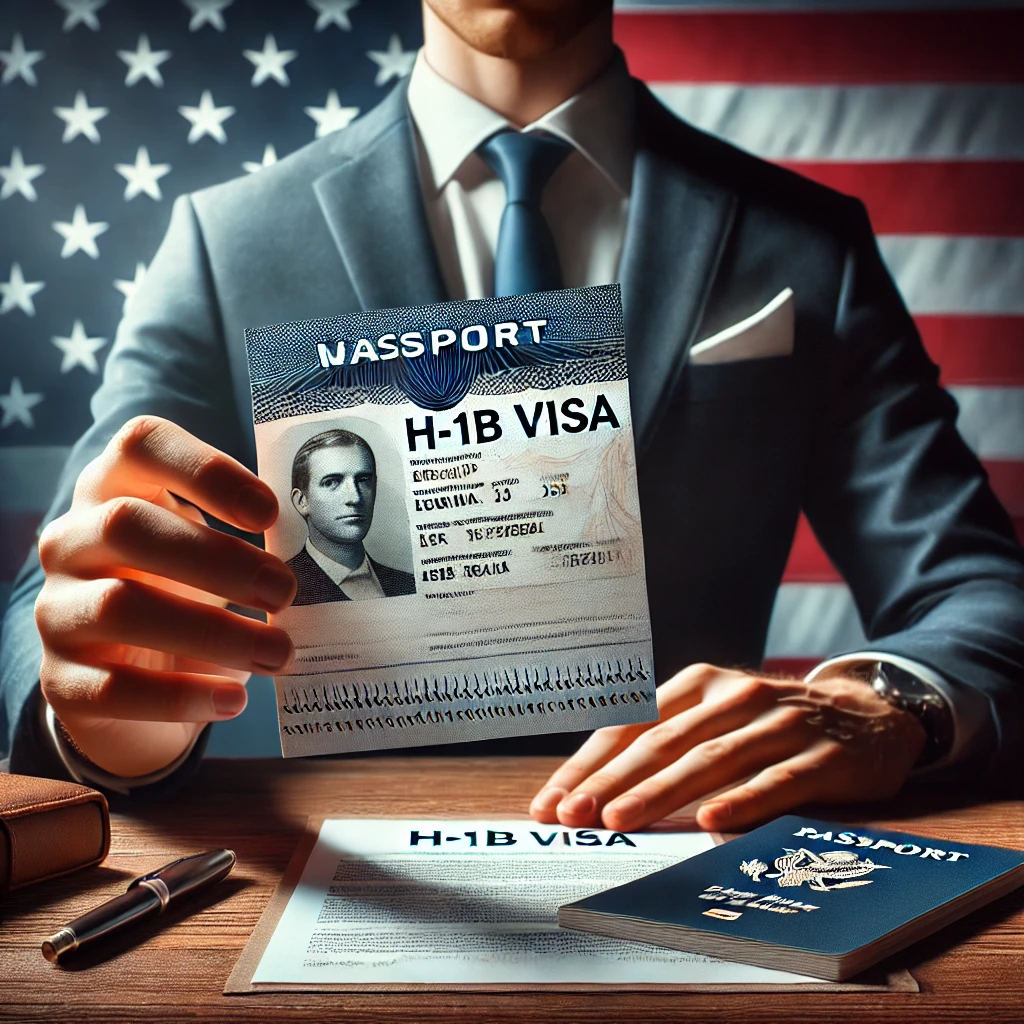The H-1B visa is one of the most sought-after work visas for foreign professionals looking to work in the United States.
This visa allows U.S. employers to hire foreign workers in specialized fields such as technology, engineering, finance, healthcare, and education. However, the process is highly competitive and has certain eligibility criteria and annual quota limits.
What is an H-1B Visa?
The H-1B visa is a nonimmigrant work visa that allows U.S. employers to hire foreign workers for specialized occupations. These occupations require at least a bachelor’s degree or equivalent education and are typically in fields such as IT, engineering, healthcare, finance, and education.
Key Features of the H-1B Visa
Requires employer sponsorship (cannot be applied for on your own).
Supports the dual intent principle, meaning you can apply for a Green Card with an H-1B visa.
Initially granted for 3 years, extendable to a maximum of 6 years.
Premium processing (expedited processing) option is available for faster processing.
Subject to annual quota (with some exceptions).
H-1B Visa Eligibility Criteria
To apply for an H-1B visa, the candidate must meet the following requirements.
1. Specialized Occupation Requirement
The job applied for must require at least a bachelor’s degree or higher. The employer must demonstrate that the position requires special knowledge and expertise.
2. Education Requirements
The applicant must have a bachelor’s degree or higher in the relevant field.
If the degree is obtained from a foreign country, its equivalence in the U.S. must be evaluated.
In some cases, work experience may be accepted in place of education.
3. Employer Sponsorship
The H-1B visa applicant must be sponsored by a U.S. employer.
The employer must file a Labor Conditions Application (LCA) with the U.S. Department of Labor (DOL) and demonstrate that hiring the foreign worker will not adversely affect U.S. employees.
H-1B Visa Application Process
1. Employer Must File a Labor Conditions Application (LCA)
A U.S. employer must file an LCA with the Department of Labor (DOL). This process verifies that the employee will be paid at or above minimum wage and that hiring the foreign worker will not harm the local workforce.
2. Employer Must File Form I-129 (H-1B Application)
Once the LCA is approved, the employer files Form I-129, Nonimmigrant Worker Application, with U.S. Citizenship and Immigration Services (USCIS).
3. H-1B Visa Lottery (If Required)
If demand exceeds supply, the H-1B visa will be awarded through a random selection process called the H-1B lottery.
H-1B Visa Quota
General Quota: 65,000 visas per year
Graduate Quota: 20,000 additional visas for candidates who have completed a graduate degree in the U.S.
4. USCIS Review and Decision Process
USCIS will review the application and may request additional documentation (RFE). Processing times are as follows:
Regular Processing: May take several months.
Premium Processing: Within 15 calendar days (for an additional fee of $2,805).
5. Visa Approval and Entry to the U.S.
Once the application is approved, the candidate must attend an interview at a U.S. Embassy or Consulate, submit the required documents, and enter the U.S. by having the H-1B visa stamped in their passport.
H-1B Visa Fees
Extension and Renewal of H-1B Visa
The H-1B visa is approved for up to 3 years on initial application and can be extended up to a maximum of 6 years. Certain exceptions may allow for further extensions for Green Card applicants.
Special Conditions by Country
The H-1B visa is open to applications from all countries, but there are special conditions for some countries.
1. H-1B1 Visa for Chile & Singapore
There is a separate visa category for citizens of Chile and Singapore.
Annual quota: 1,400 visas for Chile, 5,400 visas for Singapore
Does not require a lottery system.
2. E-3 Visa for Australian Citizens
Australian citizens can apply for the E-3 visa, which is similar to the H-1B but easier to obtain.
The annual quota is 10,500 visas and the processing fees are lower.
3. Delays and Security Checks for Some Countries
Some countries may have longer processing times for their applications.
Security screenings and diplomatic relations may affect visa issuance for some countries.
Common H-1B Visa Issues and Solutions
1. Difficulty in Getting Selected in the H-1B Lottery
Only 30-40% of applicants are selected through the lottery process. Alternative visa options include the L-1 Visa, O-1 Visa, and EB-2/EB-3 Green Card.
2. Request for Additional Documents (RFE)
USCIS may request additional documentation. The process is facilitated by the employer preparing a strong case and providing the correct documentation.
3. Reasons for H-1B Visa Denials
Often, applications are denied due to insufficient expertise, insufficient qualifications, or incorrect applications. Working with an experienced immigration attorney increases your chances of approval.
Bottom Line: Is an H-1B Visa Right for You?
The H-1B visa is one of the best options for foreign professionals who want to build a long-term career in the United States. However, high competition
